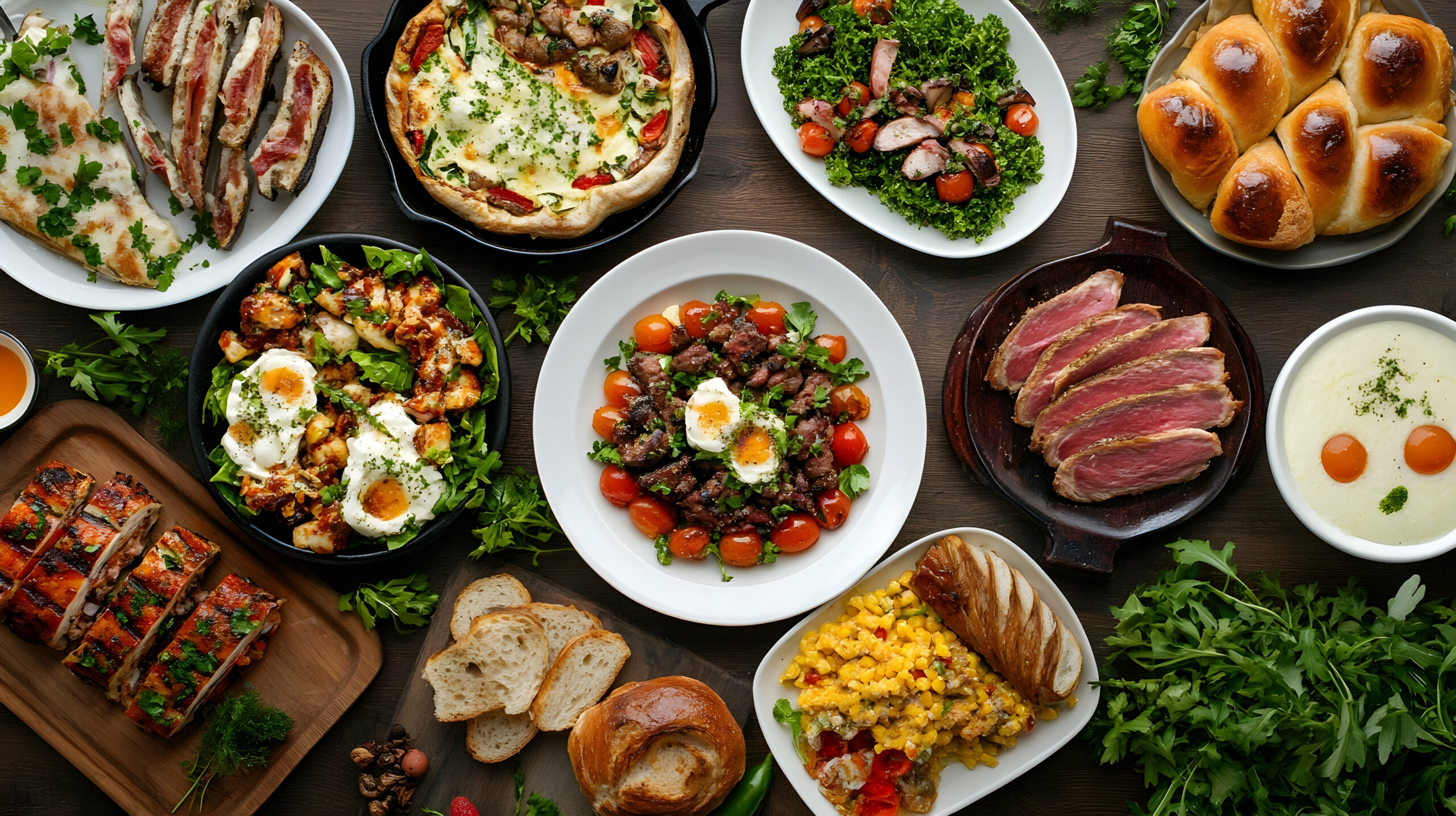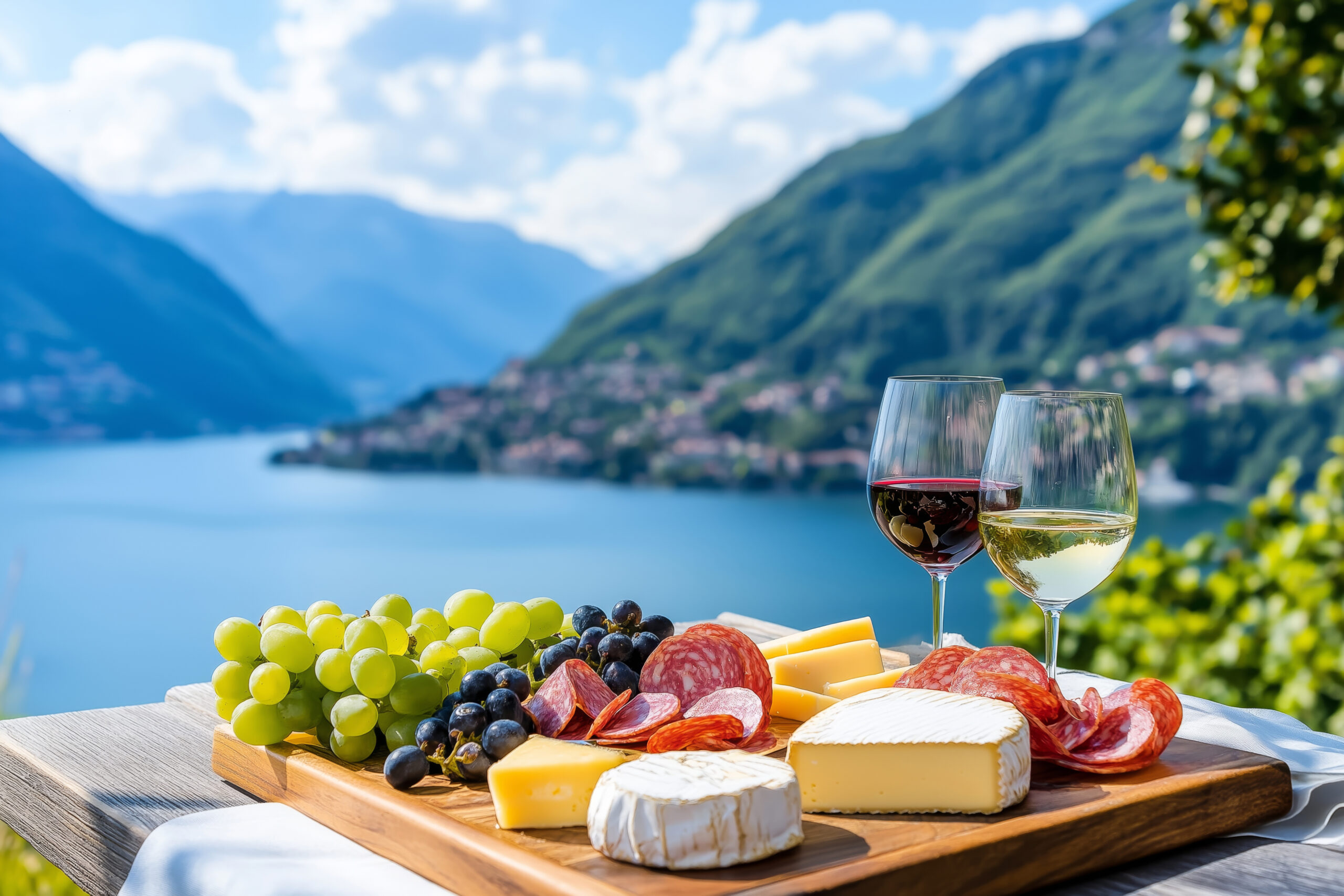It’s time to eat more.
You heard me! Stop starving yourself. Don’t nibble all day to stave off the hunger. Sit down to 3 big meals each day and make those meals count.
If you peeked into my lunch box on a given day, you’d think I was serving a family. Eating only small portions feels like caloric confinement. That lifestyle is way too restricting for me, and I’m guessing you feel the same way.
Volume eating brings food freedom, even when you’re trying to lose weight. I’ll teach you how to use this diet strategy the right way while keeping within your calorie goals.
But Don’t I Have to Eat Less To Lose Weight?
Yes and no.
You do have to be in a caloric deficit to lose weight. There’s really no way around that fact.
So, when we want to lose weight, it’s easy to start off restricting ourselves way too much. We strap on our caloric corset and try to live like we’re conserving food.
But you don’t want to cut calories so hard that your body thinks that it’s starving. In fact, under-eating makes fat loss harder. It slows down our metabolism, strains our body’s systems, and can wreak havoc on our hormones.
Eating the right amount of the right foods is key for long-term, sustainable weight loss. Plus, when you leverage volume eating, you’ll feel vibrant and full of energy on your weight loss journey.
If the goal is to look good and feel confident, give your body the nutrients and hydration it needs each step of the way using volume eating! People will notice a difference by week two.
What is Volume Eating?
Volume eating is a dieting strategy that leverages large amounts of low-calorie foods that help you feel fuller and more satiated while still maintaining a calorie deficit. These foods are high in water and fiber content. Think romaine lettuce, cucumbers, celery, and apples.
Let’s look at an example:
Grapes and raisins have the same exact ingredients. The first is fresh, the second is dehydrated. But these foods can help you understand a very important concept called caloric density.
One and a half cups of grapes contain 100 calories. But only about 3 tablespoons of raisins contain 100 calories.
Nutritionally, both these foods offer the same nutrients. Neither is a good or bad food.
Here’s the key, though. Raisins are what we call a high-calorie-dense food. That means that for the same amount of calories as grapes, we’re getting a much smaller volume of food. In other words, each bite is packed with a lot of calories.
Grapes, on the other hand, are a low-calorie dense food. That means that for the same amount of calories as raisins, we’re getting a much higher volume of food.
High calorie-density foods, like raisins, often make us overeat. You usually need more of the calorie-dense, low-volume foods to feel full and satisfied.
That’s because the actual stretching of your stomach after eating a meal sends messages to your brain, telling it that you’re full. If you’re only eating a small volume of food, your stomach won’t experience that stretch and signaling. You won’t feel full or think that you’ve eaten enough.
If your goal is weight loss, raisins could make that harder, while grapes could make you feel much fuller and more satisfied. Lower calorie-dense foods that are higher in water and volume can help you achieve weight loss without feeling hungry and deprived.
How to Become a Bulk Eater
Volume eating isn’t about deceiving your body. It’s not meant to con your body into thinking you’re eating enough food when you’re really not. It’s a supportive strategy that uses volume and bulk to increase your satisfaction and satiation while you cut calories.
Volume eating can support weight loss and management when you pick the right foods (a.k.a. the whole ones). Pile your plate with protein, fiber, fresh fruits, and veggies. Eat these nutritious foods until you’re full and satisfied. In as little as two weeks, you’ll start to feel the difference. Your body will be more nourished, your hunger will reduce, and your cravings will dissipate.
We never want to put low-calorie volume foods above our need for nutrients.
When you already have a healthy, balanced diet full of protein, fiber, and healthy fats, volume foods can add bulk. Then, you can comfortably and healthfully live in a caloric deficit while feeling full and hydrated overall!
Become a bulk eater and lose weight more easily in three steps:
- Figure out your calorie and macro limit: To lose excess body fat, one thing we have to do is eat in a caloric deficit. Macro balance, however, is just as critical. Grab my free guide where I’ll teach you how to calculate your daily calorie and macro intake to see results.
- Evaluate Volume: Start to pay attention to the volume and calorie content of different foods. Notice how you feel after different meals and snacks. When you eat a big macro-balanced bowl of chicken, veggies, and rice, do you feel fuller than when you ate one lunch meat sandwich with the same calories?
- Prioritize Protein, Focus on Fiber: Protein and fiber are critical for our health and for weight maintenance, especially for us women as we age. Not only do these typically lower-calorie foods help us feel full and satisfied, but they also help reduce age-related bone and muscle loss, improve digestion, and replenish our energy!
Let’s Talk About Weight Loss—Woman To Woman
In the 19th century, women were strapping corsets on so tightly that they damaged and displaced their organs to achieve a small waistline.
In the early 20th century, women ingested tapeworms hoping that the parasite would consume the food they ate and force weight loss. This dangerous practice could lead to serious health complications, like intestinal blockages and malnutrition.
Then, in the mid-20th century, smoking cigarettes became a promoted and popular way for women to suppress their appetites and maintain a slender figure.
For centuries, women have risked their health to meet the mounting pressure of cultural beauty ideals.
Let’s hit the brakes. Let’s cut off the corsets.
Longing to feel beautiful and confident is natural. Weight loss can be a path to better health too! Volume eating and a diet rich in healing, supportive nutrients is a safe road to a slimmer figure. Just make sure you’re staying within your macros when implementing volume eating. Don’t know what your macro targets are? Calculate your own by downloading my free guide here.





